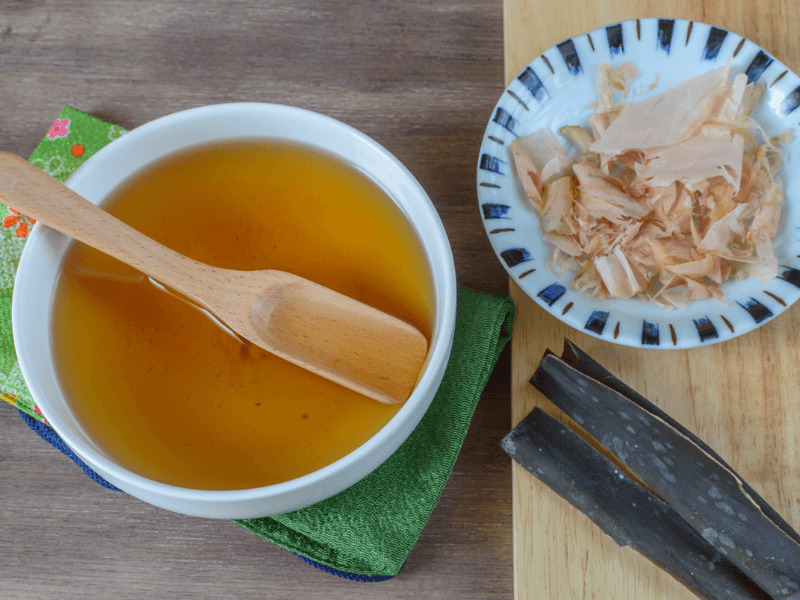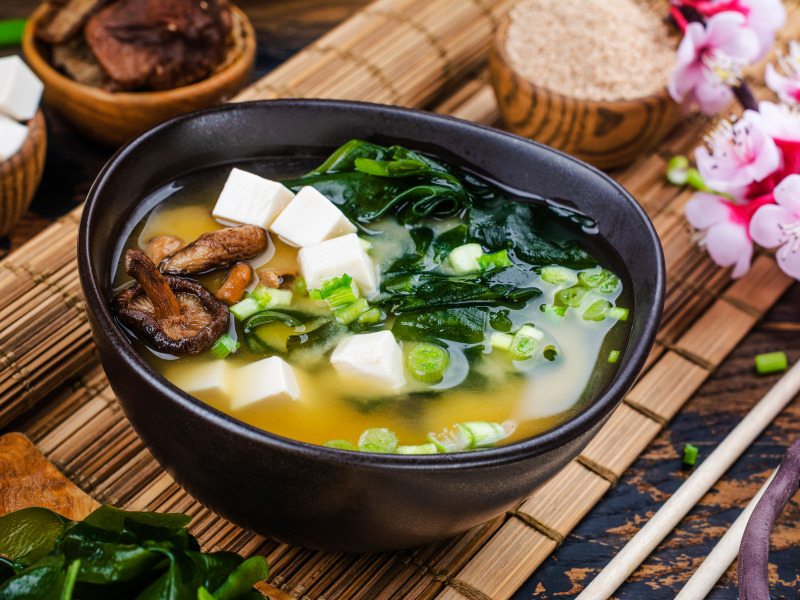If you’ve ever been to a Japanese restaurant, chances are, you’ve had miso soup. This warm, slightly cloudy soup – bursting with umami flavor – is often served in a small bowl before meals. The delicious stock that forms the base of this soup is called dashi. You might have seen this ingredient listed on Japanese menus and wondered what it was. That’s where I come in. I am happy to report that during my travels throughout Japan, I have become quite familiar with this amazing stock.
What’s In Dashi?
This is a stock that I have been trying to perfect myself, so that I can seriously step up my miso soup game. Basically, dashi stock consists of hot water, an edible kelp called kombu, and what is known as kezurikatsuo: shavings of preserved, fermented fish (usually skipjack tuna). The heated liquid is then strained to form the stock. The combination of seaweed and fermented fish is largely responsible for miso soup’s briny, umami flavor. As a vegan, I substitute dried shiitake mushrooms for the fish, which gives the stock that umami flavor I love, while still retaining the taste of the ocean. Instant dashi powder (both vegan and non-) is widely available and widely popular, but as always, homemade just tastes so much better.
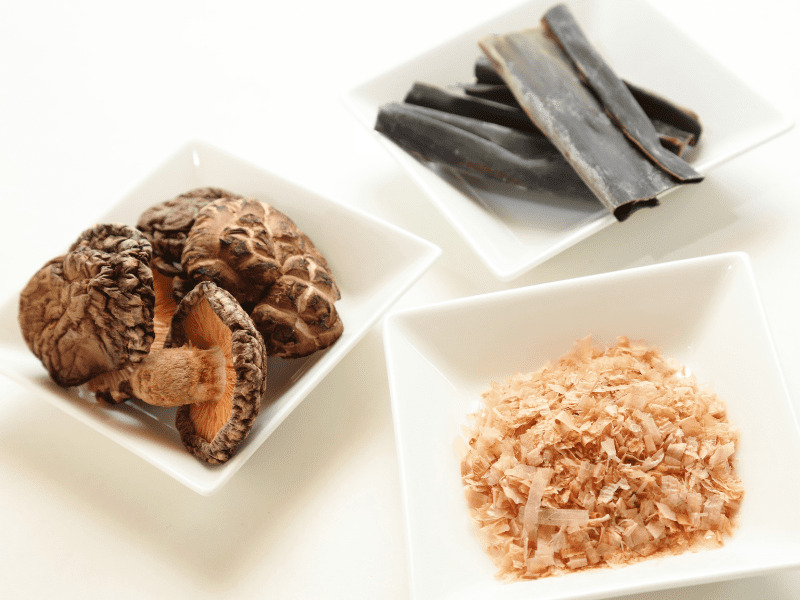
Making Dashi
One of the best things about dashi, for you home cooks out there, is that it is relatively quick and simple to prepare, even if you are making it completely from scratch. Unlike so many other stocks, which take hours to make and seem to require an entire pantry’s worth of ingredients, most dashis can be made in less than half an hour, with just a couple of ingredients. And feel free to mix and match the basic ingredients to your taste—this, after all, is how most types of dashi get their names.
Kombu dashi, for instance, is a simple, vegan-friendly preparation that primarily uses the dried kelp mentioned earlier. Niboshi dashi, on the other hand, is a more complex version that uses dried sardines (the head and entrails are removed to prevent the stock from becoming too bitter). Once you’ve hit on a dashi stock that is perfect for your diet/palette, you will be glad to find out that there are many uses for it in Japanese cooking.
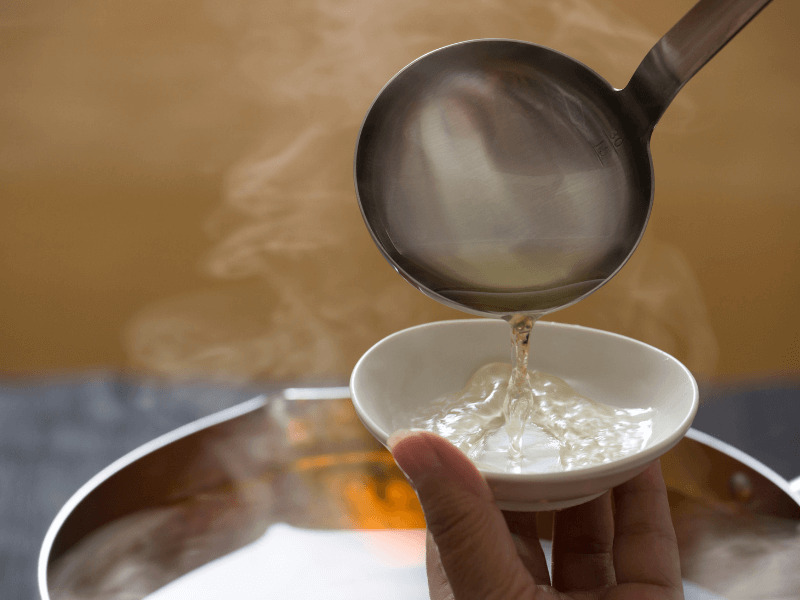
Uses Of Dashi
While dashi is best known as the base for miso soup, it finds its way into many traditional Japanese dishes. It is a common stock for Japanese noodle soups, including ramen, soba, and udon. It is also the stock of choice for Japanese hot pot, and if you’ve ever partaken of the delicious feast that is shabu shabu, you’ve likely encountered dashi stock. When I am cooking traditional Japanese dishes, I like to use it as a liquid seasoning, the same way you might use chicken stock in American dishes. It adds that delightful touch of umami to just about anything it touches. This versatile stock makes a great glaze for yakitori and can even enliven a bowl of white rice.
To me, that’s one of the best things about dashi: its versatility. It’s stock for one of my favorite soups, as well as my go-to flavor enhancer when I’m cooking Japanese food. And it can be adapted for just about any diet/palate. So feel free to experiment until you find the dashi recipe that works for you. As always, I’m happy to share my favorite recipe.
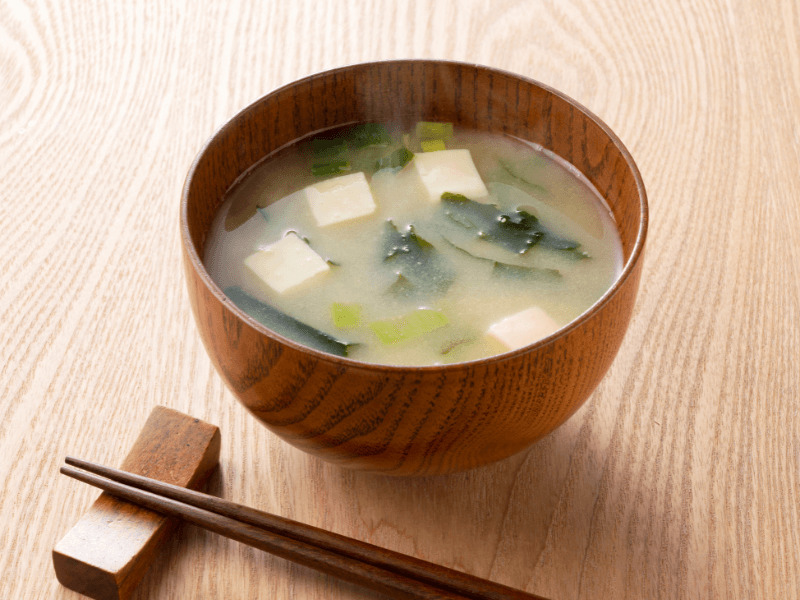
If you enjoyed this article or have suggestions on how we can improve it, please leave us a comment below. Also, make sure to check out other articles I’ve created or stories I’ve written about food culture – here.

